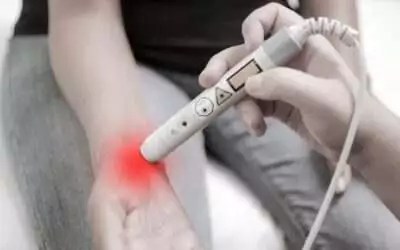Corn and wart are two common skin conditions that can appear on various parts of the body. While they may share some similarities in appearance, they are distinct conditions with different causes and treatments.
Understanding the difference between corn and wart is essential to ensure appropriate management and better overall skin health. In this article, we will explore the causes, symptoms and treatment options for both corn and wart, providing valuable insights into distinguishing between the two conditions.
What is corn?
Corn is not a skin condition, but rather a common skin problem that occurs on the feet. Corns are small, thickened areas of skin that develop due to repeated friction or pressure on specific areas of the feet. They typically form on the tops or sides of the toes, as well as on the soles of the feet. Corns can be painful and uncomfortable, often causing a burning or stinging sensation.
They can range in size and shape, appearing as either hard or soft corns. Hard corns have a dense center surrounded by a thickened layer of skin, while soft corns are usually found between the toes and have a softer texture. Although corns are not a serious medical condition, they can be bothersome and may require treatment to alleviate discomfort.
Causes of corn.
1. Ill-fitting footwear.
Wearing tight or narrow shoes is one of the leading causes of corns. When shoes do not provide enough room for the toes to move freely, they rub against the shoe material, resulting in friction and pressure on the skin. Over time, this constant irritation leads to the formation of corns.
2. High heels.
Similar to ill-fitting shoes, high heels force the feet into an unnatural position. The elevated position of the foot in high heels increases pressure on certain areas, such as the ball of the foot or the toes. This prolonged pressure can cause corns to develop, as the skin tries to protect itself from the continuous friction.
3. Excessive physical activity.
Engaging in activities that put repetitive pressure on specific areas of the feet, such as running or dancing, can lead to corn formation. The continuous impact and repetitive motion can cause friction, leading to the thickening of the skin and the eventual development of corns.
4. Abnormal foot structure.
Certain foot deformities or structural abnormalities, such as bunions, hammertoes, or flat feet, can contribute to corn formation. These conditions alter the distribution of weight and pressure on the feet, causing increased friction and eventual corn development.
5. Lack of foot hygiene.
Neglecting proper foot hygiene, including regularly cleaning and moisturizing the feet, can contribute to corn development. When the skin on the feet is dry and lacks moisture, it becomes more susceptible to friction and injury, increasing the likelihood of corn formation.
6. Age-related factors.
As individuals age, the skin tends to become thinner and less elastic. This age-related thinning of the skin makes it more vulnerable to friction and pressure, thereby increasing the chances of corn formation.
| 💡 Tips FreakToFit.com Corns, a skin condition commonly found on the feet, can be caused by ill-fitting footwear, high heels, excessive physical activity, abnormal foot structure, lack of foot hygiene, and age-related factors. Understanding these causes can help individuals take preventive measures and maintain healthier feet. |
Symptoms of Corn.
1. Thickened skin.
One of the primary indications of corn is the presence of thickened, hardened skin. Corns usually appear as small, round, or cone-shaped patches of skin that have a yellowish or grayish color. The skin may feel rough and tough to the touch.
2. Pain and tenderness.
Corns can cause significant discomfort, especially when pressure is applied. Walking or standing for prolonged periods might exacerbate the pain. The affected area might become sensitive and tender, making it difficult to wear tight or narrow shoes comfortably.
3. Burning or stinging sensation.
Corns can sometimes produce a burning or stinging sensation, particularly when the pressure on them intensifies. This discomfort can be constant or intermittent, depending on the individual and the severity of the corn.
4. Difficulty walking.
Due to the pain and discomfort caused by corns, mobility can be affected. Walking or bearing weight on the affected foot may become challenging, leading to an altered gait or limping. Severe corns can even restrict movement in extreme cases.
5. Formation of a central core.
Some corns have a central core, known as a “hard corn.” This core can press against the underlying nerves, leading to increased pain and discomfort. Hard corns are often found on the top or sides of the toes, where friction or pressure is concentrated.
6. Presence of soft corns.
In addition to hard corns, soft corns can also develop between the toes. Soft corns appear as whitish, macerated patches of skin and are usually caused by excessive moisture or friction in this area. Unlike hard corns, soft corns are more prone to infection due to the moist environment.
7. Redness and inflammation.
Corns can cause localized redness and inflammation around the affected area. This occurs when the body’s immune response is triggered by the constant pressure or friction, resulting in increased blood flow and swelling.
| 💡 Tips FreakToFit.com It is important to note that corns can be mistaken for other skin conditions, such as calluses or warts. Therefore, it is advisable to seek a professional diagnosis from a healthcare provider or dermatologist to ensure appropriate treatment and management. |
Treatments of Corn.
1. Proper Footwear: Wearing shoes that fit correctly and provide adequate support is crucial in preventing and treating corns. The footwear should have enough room for toes to move freely, reducing friction and pressure on affected areas.
2. Padding and Cushions: Padding or cushioning corns can help alleviate discomfort and protect them from further irritation. Various types of over-the-counter pads, such as moleskin or gel cushions, can be applied to the corns to reduce friction and pressure.
3. Salicylic Acid: Over-the-counter treatments containing salicylic acid can be used to soften and gradually remove the thickened skin of corns. These products are typically available in the form of pads, drops, or plasters and should be used as directed.
4. Pumice Stone: Gently rubbing the corn with a pumice stone after soaking the feet in warm water can help in removing dead skin cells and reducing the size of the corn. It is important to be cautious while using a pumice stone to avoid excessive rubbing that may cause further damage to the skin.
5. Prescription Medications: In severe cases or when other treatments fail, a dermatologist may prescribe stronger medications, such as topical retinoids or keratolytic agents, to aid in the removal of corns.
6. Foot Soaks: Soaking the feet in warm water mixed with Epsom salt or mild soap can help soften the corns and reduce pain. This should be followed by gently drying the feet and applying moisturizer to prevent excessive drying of the skin.
7. Orthotic Devices: Custom-made orthotic devices, such as shoe inserts or pads, can be beneficial in redistributing pressure and correcting foot deformities that may contribute to the development of corns.
8. Surgical Intervention: In rare cases where corns are particularly stubborn or causing severe discomfort, surgical options like corn removal surgery may be considered. This procedure involves the surgical excision or reduction of the corn, often in combination with addressing the underlying cause.
| 💡 Tips FreakToFit.com It is essential to consult a healthcare professional or dermatologist for an accurate diagnosis and appropriate treatment plan tailored to individual needs. Additionally, practicing good foot hygiene, avoiding excessive friction or pressure, and regularly moisturizing the feet can help prevent the recurrence of corns. |
What is Wart?
Wart, also known as verruca, is a common skin condition caused by the human papillomavirus (HPV) infecting the top layer of the skin. Warts are characterized by small, rough, and raised growths that typically appear on the hands, fingers, feet, and other areas of the body.
They can vary in size, shape, and color, often resembling a cauliflower or a solid blister. Warts are contagious and can spread through direct contact with an infected person or by touching surfaces that have been contaminated with the virus.
While most warts are harmless and may go away on their own over time, they can be unsightly and cause discomfort. Various treatment options, such as over-the-counter medications, cryotherapy, and laser therapy, are available to remove warts and reduce their recurrence.
Causes of Wart.
1. Human Papillomavirus (HPV) Infection.
The primary cause of warts is an infection with the human papillomavirus. There are over 100 types of HPV, and certain strains are more likely to cause warts than others.(1)
Direct contact with a person or surface carrying the virus can lead to its transmission, allowing the virus to enter the skin through small cuts or abrasions, resulting in the development of warts.
2. Weakened Immune System.
Individuals with weakened immune systems, such as those with autoimmune disorders, HIV/AIDS, or undergoing immunosuppressive therapy, are more susceptible to developing warts. A compromised immune response is less effective at fighting off the HPV virus, leading to an increased likelihood of warts.
3. Direct Skin-to-Skin Contact.
Warts are highly contagious and can spread through direct skin-to-skin contact with an infected person. This commonly occurs through activities like shaking hands, sharing personal items (such as towels or razors), or engaging in sexual contact with an infected individual.
The virus can easily transfer to healthy skin, creating an environment for wart formation.
4. Damaged or Broken Skin.
Warts tend to develop more readily on damaged or broken skin. Cuts, scratches, or other skin injuries provide an entry point for the HPV virus, making the affected area more susceptible to wart formation.
Engaging in activities that increase the likelihood of skin damage, such as nail biting or picking at hangnails, can thus increase the chances of developing warts.
5. Warm and Moist Environments.
HPV thrives in warm and moist environments, which can facilitate its transmission and subsequent development of warts. Areas such as public swimming pools, locker rooms, or communal showers create an ideal breeding ground for the virus.
Walking barefoot in such environments or sharing contaminated objects can lead to the transmission of HPV and the manifestation of warts.
6. Genetic Predisposition.
Some individuals may have a genetic predisposition to developing warts. Certain genetic variations can make a person more susceptible to HPV infections and, consequently, the development of warts when exposed to the virus. This genetic susceptibility highlights the importance of understanding one’s family medical history when assessing the risk of developing warts.
| 💡 Tips FreakToFit.com Warts are primarily caused by a viral infection with HPV, with various contributing factors that influence their occurrence. Understanding these causes allows individuals to adopt preventive measures, seek appropriate treatments, and effectively manage this prevalent skin condition. |
Symptoms of Wart.
1. Raised Skin Growth.
Warts typically appear as small, raised bumps on the skin’s surface. They can be round or irregularly shaped and often have a rough texture. These growths can vary in size, ranging from a few millimeters to several centimeters in diameter.
2. Skin Discoloration.
Warts can cause changes in the skin color surrounding the affected area. This discoloration can be lighter or darker than the surrounding skin, making the wart more noticeable and aesthetically bothersome.
3. Pain or Discomfort.
Warts can be accompanied by pain or discomfort, particularly when located on pressure points or areas frequently exposed to friction, such as the hands, feet, or genitals. Walking or standing may become painful, and warts in areas prone to irritation can cause itching or tenderness.
4. Clusters or Multiplicity.
Warts often appear in clusters or multiples, especially if left untreated or when spread through direct or indirect contact. This characteristic makes them more challenging to manage and may contribute to self-consciousness or embarrassment.
5. Cauliflower-like Appearance.
Certain types of warts, such as common warts or genital warts, may develop a cauliflower-like appearance. These warts have a bumpy, irregular surface resembling the head of a cauliflower, which can further contribute to their visibility and discomfort.
6. Bleeding or Ulceration.
In some cases, warts may become injured or irritated, leading to bleeding or ulceration. This can occur when warts are scratched, shaved, or traumatized, leaving them vulnerable to infection. Bleeding or ulceration may cause pain, create an open wound, and increase the risk of spreading the virus.
7. Rapid Growth or Change.
Although warts generally develop slowly, certain factors such as a weakened immune system or trauma can cause them to grow rapidly or change in appearance. This sudden growth or alteration may indicate the need for medical attention, as it could be a sign of a more severe condition or potential malignancy.
| 💡 Tips FreakToFit.com It is important to note that individual experiences with warts may vary, and some people may not exhibit all of these symptoms. If you suspect you have warts or notice any skin abnormalities, it is advisable to consult a healthcare professional for an accurate diagnosis and appropriate treatment options. |
What is the Difference Between Corn and Wart?
- Corn is a type of callus that forms on the feet or hands, while a wart is a small, rough growth that usually appears on the hands or feet.
- Corns are caused by excessive pressure or friction, usually from ill-fitting shoes or repetitive actions, whereas warts are caused by a viral infection, specifically the human papillomavirus (HPV).
- Corns typically have a hard, thickened skin with a central core, while warts usually have a rough, irregular surface and may have tiny black dots (blood vessels).
- Corns can be painful when pressure is applied, while warts are usually painless unless they are located on weight-bearing areas of the feet.
- Corns can be treated by removing the source of pressure or friction, using over-the-counter corn pads, or seeing a healthcare professional for more advanced treatments. Warts can be treated with over-the-counter wart removers, cryotherapy (freezing), laser therapy, or other medical interventions.
- Corns are not contagious, but warts can be spread through direct contact or by touching contaminated surfaces.
- Corns are more common in older adults or people with foot deformities, while warts are more common in children and young adults.
People Often Ask.
No, corn remover and wart remover are not the same. They are designed to treat different conditions.
Take Away.
Corns and warts may share some similarities in appearance and location, but they are distinct in their causes, symptoms, and treatment options. While corns are caused by pressure or friction on the skin, warts are caused by a viral infection.
Corns typically present as thickened, hardened skin, while warts appear as small, rough growths with a cauliflower-like texture.
Treatment for corns involves relieving pressure and removing dead skin, whereas warts often require medical intervention, such as cryotherapy or topical medications. Understanding the differences between corns and warts is crucial for accurate diagnosis and appropriate treatment, ensuring optimal foot health and overall well-being.
+1 Source
Freaktofit has strict sourcing guidelines and relies on peer-reviewed studies, educational research institutes, and medical organizations. We avoid using tertiary references. You can learn more about how we ensure our content is accurate and up-to-date by reading our editorial policy.
- Human papillomavirus and cancer; https://www.who.int/news-room/fact-sheets/detail/human-papilloma-virus-and-cancer









































 Workout
Workout

 Meditation
Meditation






 Podcast
Podcast
 E-book
E-book















